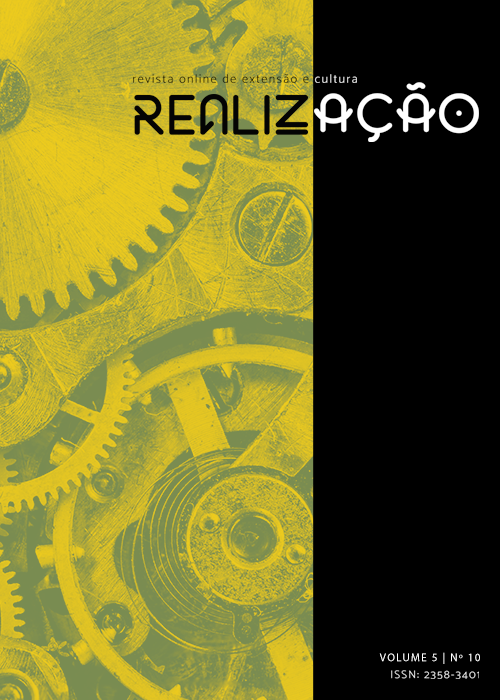Monitoreo de la generación de residuos sólidos en la Universidad Estadual de Mato Grosso do Sul - Unidad Coxim: una propuesta de herramientas para mitigar la generación de residuos
DOI:
https://doi.org/10.30612/re-ufgd.v5i10.8616Palabras clave:
3 R , Gestión ambiental , Impactos ambientales , Instituciones de educación superiorResumen
Uno de los principales problemas de la sociedad moderna es la generación excesiva de residuos sólidos, que contribuyen a la degradación ambiental, el deterioro de los entornos naturales y el aumento de las tasas de enfermedades. El presente trabajo consiste en el seguimiento de la generación de residuos sólidos en la Universidad Estadual de Mato Grosso do Sul en Coxim-MS, realizado con pesaje gravimétrico de todo el material generado, semanalmente, entre los meses de marzo, abril y mayo. Se observó que la unidad produce una pequeña cantidad de residuos en comparación con otras unidades, por lo que, con iniciativas simples propuestas en el presente estudio, es posible reducir aún más la generación de residuos sólidos en la unidad.
Descargas
Citas
ABRELPE. Panorama dos resíduos sólidos no Brasil. Disponível em: <http://www.abrelpe.org.br/Panorama/panorama2016.pdf>. Acesso em: 01 maios de 2018.
Brasil. Lei n. 12.305, de 2 de agosto de 2010 da Política nacional de resíduos sólidos. – Brasília: Câmara dos Deputados. p.73,2010. Disponível em: https://fld.com.br/catadores/pdf/politica_residuos_solidos.pdf. Acesso em; 01 de maio de 2018.
MOREIRA, R.M. Sustainability at Higher Education Institutions: case study of the solid waste management at the University of São Paulo - São Carlos Campus. Tese de Doutorado, Escola de Engenharia de São Carlos, Universidade de São Paulo, São Carlos, 2017.
Descargas
Publicado
Cómo citar
Número
Sección
Licencia
Derechos de autor 2018 Juliana Lima dos Santos

Esta obra está bajo una licencia internacional Creative Commons Atribución-NoComercial-CompartirIgual 4.0.
Autores que publicam nesta revista aceitam as normas de publicação, bem como, concordam com os seguintes termos:
(a) O Conselho Editorial se reserva ao direito de efetuar, nos originais, alterações da Língua portuguesa para se manter o padrão culto da língua, respeitando, porém, o estilo dos autores.
(b) Autores mantêm os direitos autorais e concedem à revista o direito de primeira publicação, com o trabalho simultaneamente licenciado sob a Creative Commons Atribuição-NãoComercial-CompartilhaIgual 4.0 Internacional que permite: Compartilhar — copiar e redistribuir o material em qualquer suporte ou formato e Adaptar — remixar, transformar, e criar a partir do material. A Creative Commons Atribuição-NãoComercial-CompartilhaIgual 4.0 Internacional considera os termos seguintes:
- Atribuição — Você deve dar o crédito apropriado, prover um link para a licença e indicar se mudanças foram feitas. Você deve fazê-lo em qualquer circunstância razoável, mas de nenhuma maneira que sugira que o licenciante apoia você ou o seu uso.
- NãoComercial — Você não pode usar o material para fins comerciais.
- CompartilhaIgual — Se você remixar, transformar, ou criar a partir do material, tem de distribuir as suas contribuições sob a mesma licença que o original.
- Sem restrições adicionais — Você não pode aplicar termos jurídicos ou medidas de caráter tecnológico que restrinjam legalmente outros de fazerem algo que a licença permita.


